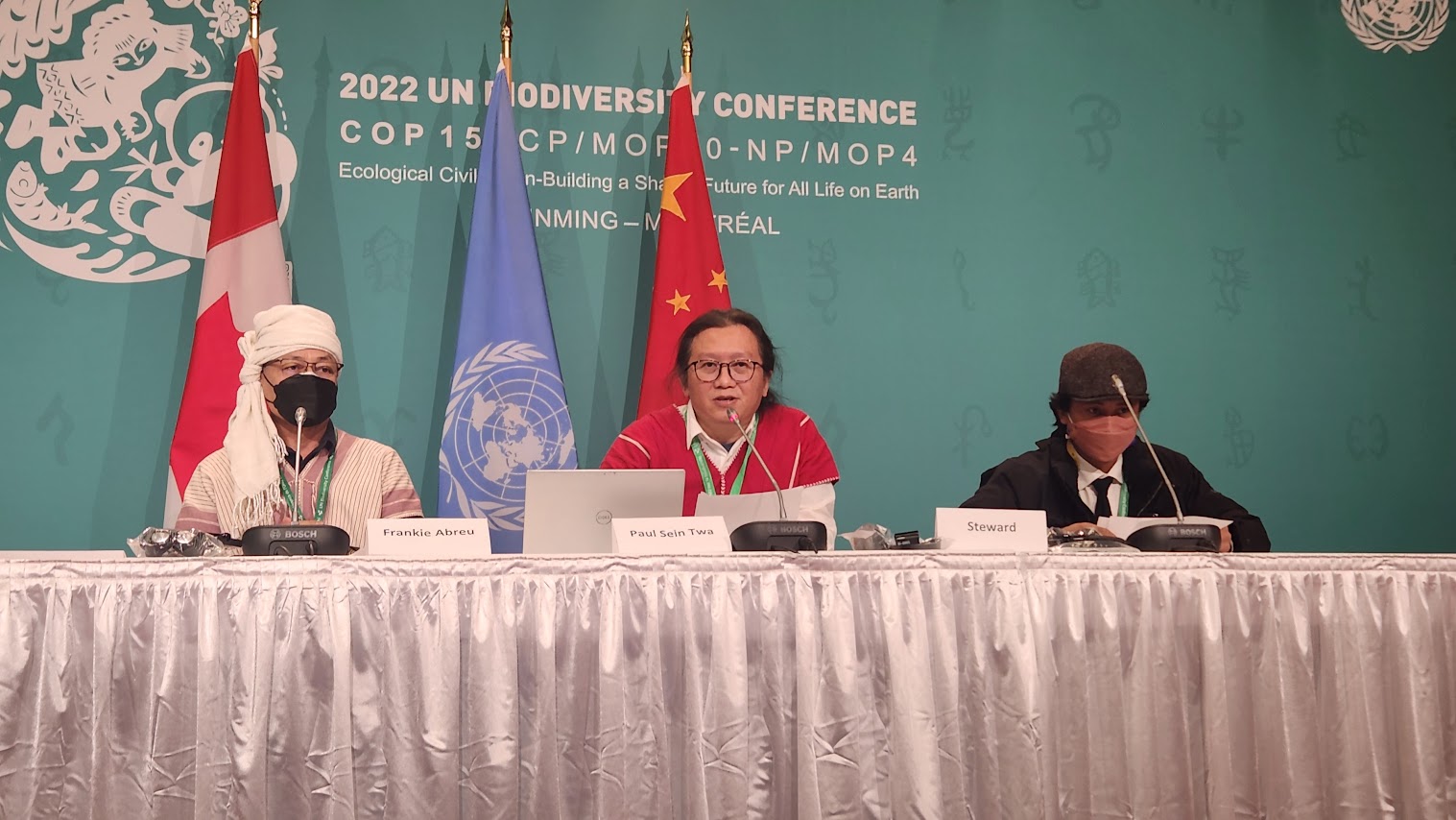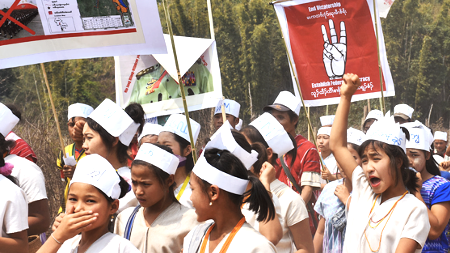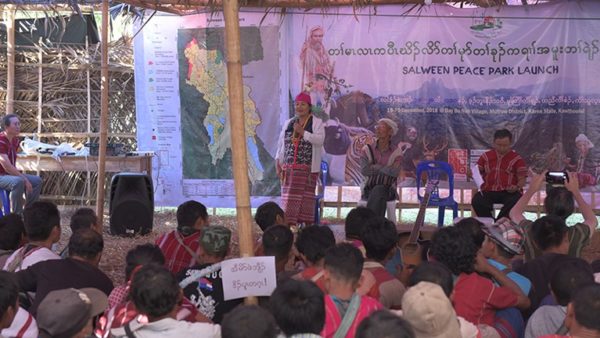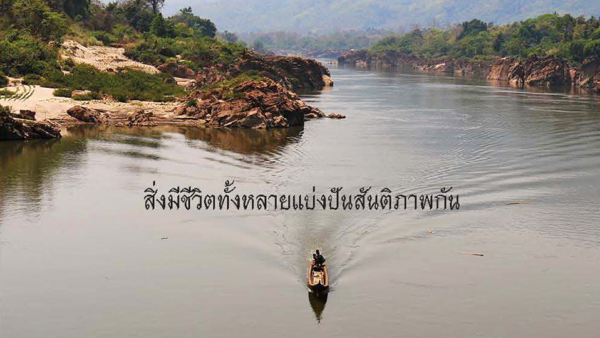The success of Indigenous solutions to pressing conservation challenges in Burma/Myanmar is well-known despite the insurmountable violence and hardships that Indigenous Peoples face in the country
First published on 01/16/2023, and last updated on 09/21/2023
By Saw Paul Sein Twa, Executive Director, Karen Environmental and Social Action Network (ICCA Consortium Member)
Saw Frankie Abreu, Co-Chairperson of All Burma Indigenous Peoples’ Alliance (ABIPA)
Steward, Co-Chairperson of All Burma Indigenous Peoples’ Alliance (ABIPA)
During the 15th Conference of the Parties (COP15) to the Convention on Biological Diversity (CBD) in Montreal, Canada, ICCA Consortium organized a press conference titled ‘local Indigenous solutions to global challenges in Burma/ Myanmar’ on December 12, 2022, in room 220D (Kuujjuaq) of the conference’s main venue Palais des Congrès. The following is the opening statement of the press conference delivered by three Indigenous leaders from Burma. The text has been edited for clarity.
It has been almost two years since the military coup in Burma/ Myanmar, and the country is facing a challenging situation.
The conflict has reignited across the country. The military is committing crimes against humanity. Logging and mining operations have increased across the country. Our country’s and people’s futures have been uncertain—we don’t know when this situation will stop worsening. This rapidly deteriorating situation in Burma has pushed Indigenous People, the forests, and the bio-cultural diversity we steward onto a dangerous path.
Our people, our forest, and our biodiversity lie in balance.
As world leaders, civil society representatives, conservationists, and UN officials gather this week in Montreal for the 15th Conference of the Parties (COP15) of the Convention on Biological Diversity (CBD), Indigenous People in Burma would like to ask how we can participate in the global fight to protect biodiversity during this perilous time, and how can the upcoming Global Biodiversity Framework support Indigenous communities in Burma and other countries that are also facing conflict, dictatorship, and rapid resource extraction.
While plans like ‘30 by 30’ may seem like a bold step to protect the world’s remaining biodiversity, nothing could be further from the truth for Indigenous communities in countries like Burma. In Burma, most forests and biodiversity are in the territories of Indigenous peoples, protected according to local practices, values, and customs of local and Indigenous communities. Centrally controlled protected areas, on the other hand, have presented significant threats to both the human rights of local and Indigenous communities and the sustenance of biodiversity.
In northern Kachin State, for example, the land inside protected areas has been granted to agribusiness companies to control and clear forestland. In the southernmost Tanintharyi Region, protected areas have threatened to displace thousands of Indigenous communities and aggravate long-standing conflicts. Since the military coup, the military has clear-cut wildlife reserves and protected areas, looking for quick cash to continue their war against the people.
Indigenous communities lay a path forward
Despite the lack of political, technical, and financial support, as well as, in many places, the violent marginalization and oppression that they face, Indigenous Peoples continue to protect and sustain a vast majority of the world’s biodiversity. In Burma, for example, initiatives such as the Salween Peace Park, a 6,700 square kilometer Indigenous community conserved area located in conflict-affected northern Karen State, demonstrate the ingenuity and determination of Indigenous Peoples to protect their biodiversity despite the many obstacles in our way. Much of Burma’s biodiversity is protected and sustained through similar initiatives.
Global Biodiversity Framework and Burma/Myanmar
- Customary and Indigenous rights have never been recognized nationally in Burma. These rights must be enshrined in any future bottom-up federal Burma. Otherwise, our communities in territories like Salween Peace Park will immediately become vulnerable to dispossession. This is a crucial issue for Indigenous Peoples across Burma and a dire threat to the globally significant biodiversity and ecosystems we steward.
- Sustainable access to and decision-making power over funding is a continuing concern. We need to shift the paradigm away from donor-driven projects and targets and refocus on listening to the needs of the communities so that the vast resources of global climate and conservation funding can be used effectively. To ensure the sustainability of community-driven projects like the Salween Peace Park, donors need to think long and hard about the accessibility of grant mechanisms, including simplifying requirements and ensuring fair access.
- The decision-making power of Indigenous Peoples is also crucial in international policy instruments like the CBD, where we continue to be denied any meaningful input. This leads to potentially disastrous targets and mechanisms like ‘30 by 30’ and other effective area-based conservation measures (OECMs), which rely on national governments to decide whether they will recognize Indigenous and traditional territories as beneficial or harmful to global conservation. Burma is a clear example that more is needed.
To achieve a healthy and peaceful future for all in Burma, we need to guarantee real power and protection for Indigenous Peoples and local communities. The Salween Peace Park is one example of how and why this should be ensured, recognizing the value already present within our nation rather than trying to reinvent the wheel.
Suppose the Indigenous peoples in Burma and other countries continue to suffer from lacking the financial, technical, and political support they need to strengthen and maintain their territories. In that case, the world will never achieve the targets of the Global Biodiversity Framework.



